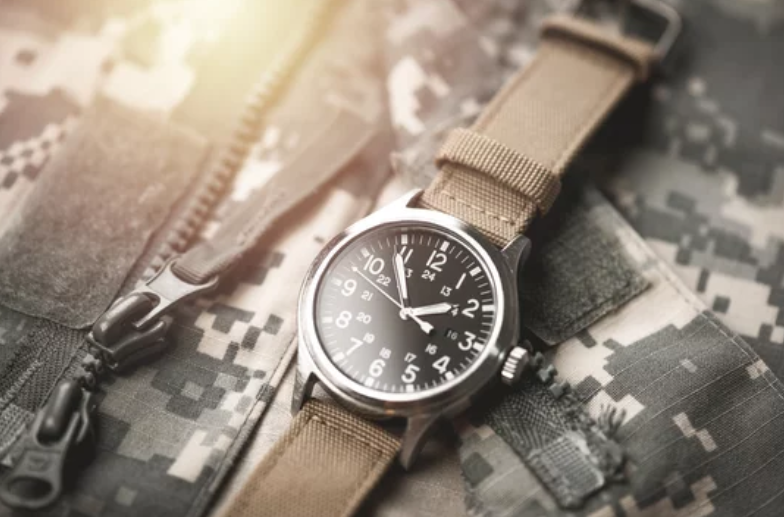Understanding the differences between military time and standard time (also known as the 12-hour clock) is essential for anyone who regularly schedules meetings, works across time zones, or operates in industries where precision in timekeeping is critical. Military time, or the 24-hour clock, is used by the military, healthcare providers, aviation, and emergency services, while the 12-hour clock is the format most people are familiar with in their day-to-day life. In this blog post, we’ll explain the key differences between military time and standard time, the benefits of each system, and how to convert between the two.
What is Military Time?
Military time is a 24-hour clock system that runs from midnight (00:00) to 11:59 PM (23:59). Instead of dividing the day into two 12-hour cycles (AM and PM), military time uses a continuous count of hours from 00:00 to 23:59. This system is widely used by the military, emergency services, hospitals, and other industries that rely on clear and precise timekeeping.
In military time:
- 00:00 represents midnight.
- 12:00 represents noon.
- 15:00 represents 3:00 PM.
- 23:00 represents 11:00 PM.
Check out Military Time Converter
What is Standard Time?
Standard time, also known as the 12-hour clock, is the format most commonly used in daily life. It divides the day into two 12-hour segments:
- AM (Ante Meridiem) refers to the time from midnight to just before noon (12:00 AM – 11:59 AM).
- PM (Post Meridiem) refers to the time from noon to just before midnight (12:00 PM – 11:59 PM).
The 12-hour clock resets at noon and midnight, making it necessary to differentiate between AM and PM to clarify whether an event is scheduled in the morning or evening.
Key Differences Between Military Time and Standard Time
1. AM and PM vs. 24-Hour Format
One of the most obvious differences between military time and standard time is the way they handle the distinction between morning and evening hours. In standard time, you must specify whether a time is AM (morning) or PM (afternoon/evening). For instance, 7:00 AM is in the morning, while 7:00 PM is in the evening. Military time avoids this confusion by counting continuously from 00:00 (midnight) to 23:59 (11:59 PM), so there’s no need to clarify AM or PM.
For example:
- 7:00 AM (standard time) = 07:00 (military time)
- 7:00 PM (standard time) = 19:00 (military time)
2. Clarity and Precision
Military time offers greater clarity and precision, especially in industries where scheduling errors can have serious consequences, such as aviation or healthcare. Because military time uses a unique hour designation for each time of the day, there is no ambiguity about whether an event is scheduled for the morning or evening. This precision reduces the risk of misunderstandings and errors, especially in global or high-pressure settings.
In contrast, standard time can sometimes be confusing, especially when communicating across time zones or scheduling important events. For instance, if you mistakenly write “7:00” without specifying AM or PM, it could lead to confusion.
3. Global Use and Standardization
Military time is the standard timekeeping system in many countries and industries around the world. For example, most European countries use the 24-hour clock as their default time format, while the United States, Canada, and a few other countries primarily use the 12-hour clock. As a result, military time is often used in international business, travel, and communications to avoid confusion.
The 12-hour clock, on the other hand, is more commonly used in everyday life, especially in the US and countries that follow similar conventions. However, when clarity is critical, military time becomes the preferred choice, particularly in professional and technical fields.
4. Ease of Conversion
For those who are used to standard time, converting to military time may seem challenging at first, but it’s a straightforward process. The key difference is that military time does not reset at noon. To convert standard PM times to military time, simply add 12 to the hour.
For example:
- 1:00 PM = 13:00
- 5:00 PM = 17:00
- 9:00 PM = 21:00
Midnight is written as 00:00 in military time, while noon is written as 12:00.
5. Eliminating Time Zone Confusion
Military time is often used in conjunction with time zone identifiers (e.g., Zulu time, also known as Coordinated Universal Time or UTC). This makes it an excellent system for international travel, business, and communication. Military time ensures that there is no confusion about time differences when coordinating across multiple time zones.
For instance, if you’re scheduling a meeting with colleagues in different parts of the world, using military time in conjunction with UTC can ensure that everyone knows exactly when the meeting will take place, regardless of local time zones.
6. No Reset at Noon or Midnight
Unlike standard time, which resets at both noon (12:00 PM) and midnight (12:00 AM), military time provides a continuous count of the hours throughout the day. This eliminates any confusion over whether “12:00” refers to midnight or noon. In military time:
- 00:00 represents midnight.
- 12:00 represents noon.
This straightforward approach avoids the inconsistencies of standard time, where both 12:00 AM and 12:00 PM can cause confusion.
Benefits of Military Time Over Standard Time
1. Reduces Scheduling Errors
Military time significantly reduces the likelihood of scheduling errors, especially in professional or high-stakes environments. By eliminating the need to specify AM or PM, military time ensures that everyone is on the same page when it comes to scheduling events, appointments, or shifts.
2. Easier to Coordinate Across Time Zones
Military time is ideal for coordinating across time zones. When working with international teams or scheduling events across different regions, using military time helps prevent miscommunication and confusion. For example, when specifying 15:00, there’s no question that it’s 3:00 PM, regardless of the time zone.
3. Increased Clarity in Emergency Situations
In fields like healthcare and emergency services, precision is crucial. Military time is used to document patient care, medical procedures, and shift changes to ensure that there is no ambiguity about when specific actions took place. This can be vital for tracking medications, surgeries, or emergency response times.
4. Improved Time Management
For individuals looking to improve their time management, military time can offer a more structured way to think about the day. Because the hours don’t reset at noon, you can keep better track of how much time has passed and how much remains in the day, leading to better productivity and task management.
How to Convert Military Time to Standard Time (and Vice Versa)
Converting military time to standard time is simple:
- For times from 00:00 to 11:59, simply keep the time as is but add “AM.” For example, 07:30 = 7:30 AM.
- For times from 13:00 to 23:59, subtract 12 from the hour and add “PM.” For example, 16:00 = 4:00 PM.
To convert from standard time to military time:
- For AM times, keep the time the same but write it in four digits. For example, 7:00 AM = 07:00.
- For PM times, add 12 to the hour. For example, 3:00 PM = 15:00.
Military time and standard time each serve important functions, but understanding the differences between the two is crucial for effective time management and communication. While standard time is more common in everyday use, military time offers greater precision, clarity, and global standardization, making it ideal for professional, emergency, and international settings.
By learning to convert between the two systems and understanding when to use military time, you can avoid confusion, improve scheduling accuracy, and make your daily routines more efficient. Whether you’re managing appointments, coordinating with global teams, or simply looking to improve your time management, adopting military time can bring more clarity and precision to your life.

